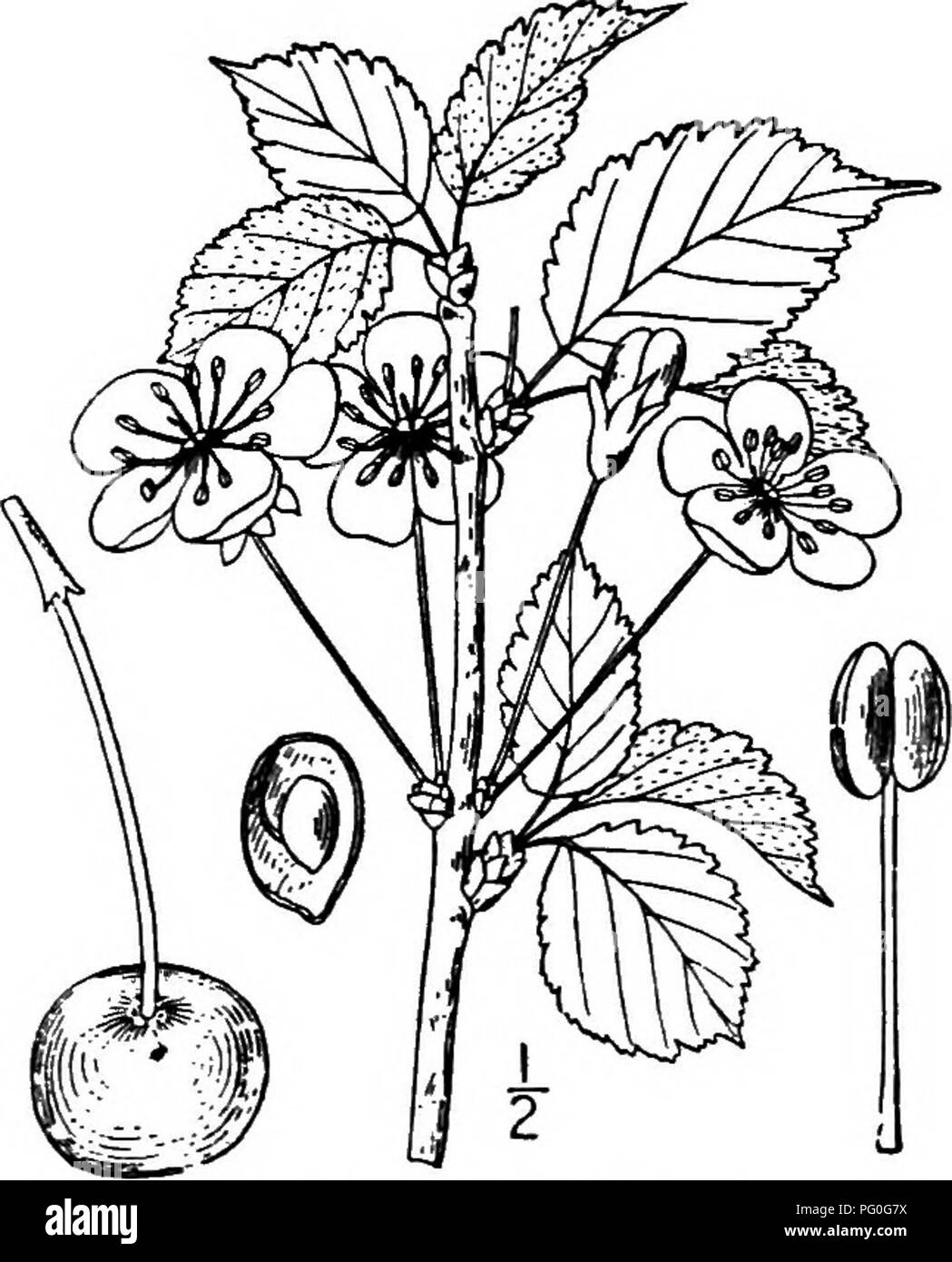. North American trees : being descriptions and illustrations of the trees growing independently of cultivation in North America, north of Mexico and the West Indies . Trees. 498 The Plums and Cherries before or with the leaves in April or May, are 1.5 to 2.5 cm. across, in lateral, very scaly, short-stalked 2-to 5-flowered umbels, on smooth slender pedicels 2 to 4 cm. long; the calyx-tube is urn-shaped, smooth, its lobes rather broad, blunt, minutely glandular-toothed and reflexed; the petals are broadly obovate, notched at the apex. The fruit ripens in June and July, is nearly globular, 8 to

Image details
Contributor:
Central Historic Books / Alamy Stock PhotoImage ID:
PG0G7XFile size:
7.1 MB (318.4 KB Compressed download)Releases:
Model - no | Property - noDo I need a release?Dimensions:
1420 x 1759 px | 24 x 29.8 cm | 9.5 x 11.7 inches | 150dpiMore information:
This image is a public domain image, which means either that copyright has expired in the image or the copyright holder has waived their copyright. Alamy charges you a fee for access to the high resolution copy of the image.
This image could have imperfections as it’s either historical or reportage.
. North American trees : being descriptions and illustrations of the trees growing independently of cultivation in North America, north of Mexico and the West Indies . Trees. 498 The Plums and Cherries before or with the leaves in April or May, are 1.5 to 2.5 cm. across, in lateral, very scaly, short-stalked 2-to 5-flowered umbels, on smooth slender pedicels 2 to 4 cm. long; the calyx-tube is urn-shaped, smooth, its lobes rather broad, blunt, minutely glandular-toothed and reflexed; the petals are broadly obovate, notched at the apex. The fruit ripens in June and July, is nearly globular, 8 to 12 mm. in diameter, red to black, without bloom; the flesh is juicy and acid, separating readily from skin and stone. The fruit of the Sour cherry, as found growing wild, is usually too small and sour to be much used; that of its cultivated forms, however, is well known and highly valued for its agreeably acidulous taste and flavor. The wood is strong, rather soft, close-grained and yellowish red; its specific gravity is about 0.87. It is used like that of the Sweet cherry, from which it is not differentiated by wood workers. 14. SWEET CHERRY —Pninus Avium Linnaeus Also called Bird, Crab, Wild, or Mazard cherry, this is native of Europe and has long been extensively cultivated in many improved varieties; it is frequently spontaneous, usually from seed distributed by birds, in open woods and along road- sides and neglected fence rows. Its maxi- mum height is about 21 meters, with a trunk diameter of 1.2 meters. The trunk is tall and straight, with short, stiff branches, forming an upright conic rather close-headed tree. The bark is 8 to 10 mm. thick, covered by a rather smooth, gray-brown, leathery outer layer, which is roughened or fissured transversely, its edges often rising, exposing the inner bark, which then becomes more or less deeply furrowed longitudinally. The twigs are stout, smooth, gray to red-brown. The leaves are thick, ovate, oval or somewhat obovate, 6 to 12